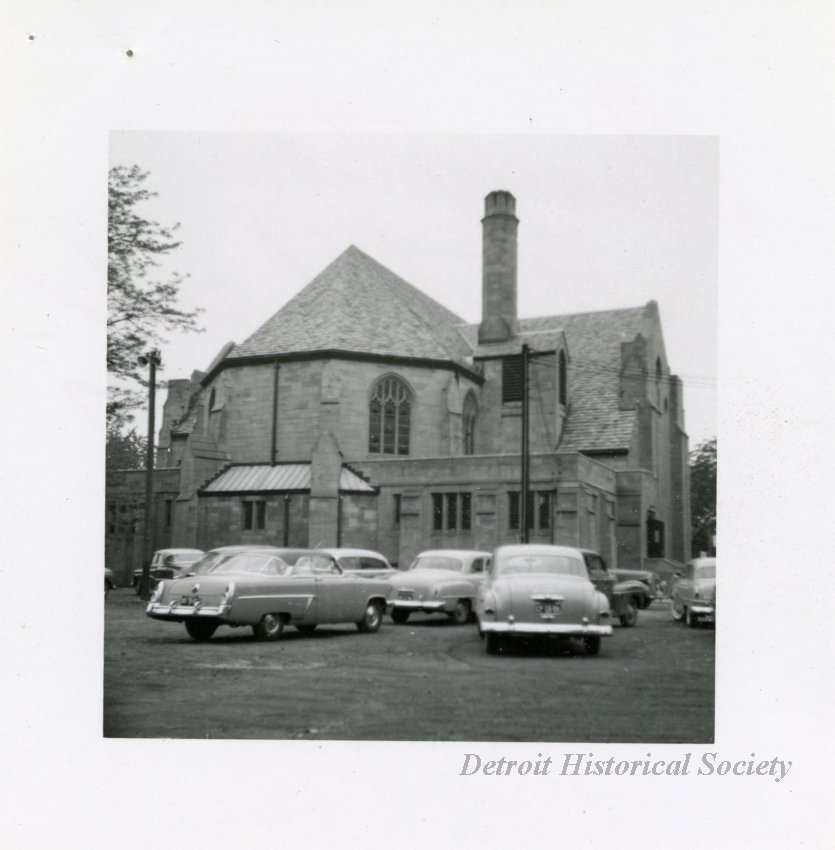When German immigrants first came to Detroit in 1830, they arrived in the middle of a cholera epidemic. Avoiding the city, they traveled north along Gratiot Street, establishing a small settlement in the Connor’s Creek community. They built a log church in 1832 where the present church now stands. Over the years the parish was known as the “Kirche Im Walde," or, “little church in the woods.” The name was later changed to "Chapel of the Assumption," and later "St. Mary's in the Woods" before being designated the "Assumption of the Blessed Virgin Mary Church."
Father Amandus Vandendriessche was appointed the first full-timed pastor in 1852. He supervised the construction of the second church which was dedicated on May 31, 1853. When this church burned down in 1907, construction began on a third church which was dedicated December 8, 1908. By the 1920s, this church proved to be too small and the Detroit architectural firm of Aloys Frank Herman was hired to design the current church. Dedication took place on May 30, 1930.
Father Vandendriessche had visited France and was so inspired by the shrine at Our Lady of Lourdes that he had a replica of the grotto constructed. Designed by Peter Dederichs, it is located behind the church, near the back of the parish cemetery. The grotto was dedicated May 29, 1881.
As a result of the shrine’s fame, the Church of the Assumption began to be known as Assumption Grotto. The Grotto was renovated and rededicated on August 15, 2002. The entire church complex, which consists of the church, parish house, rectory, cemetery and grotto, was entered into the National Register of Historic Places in 1991.
